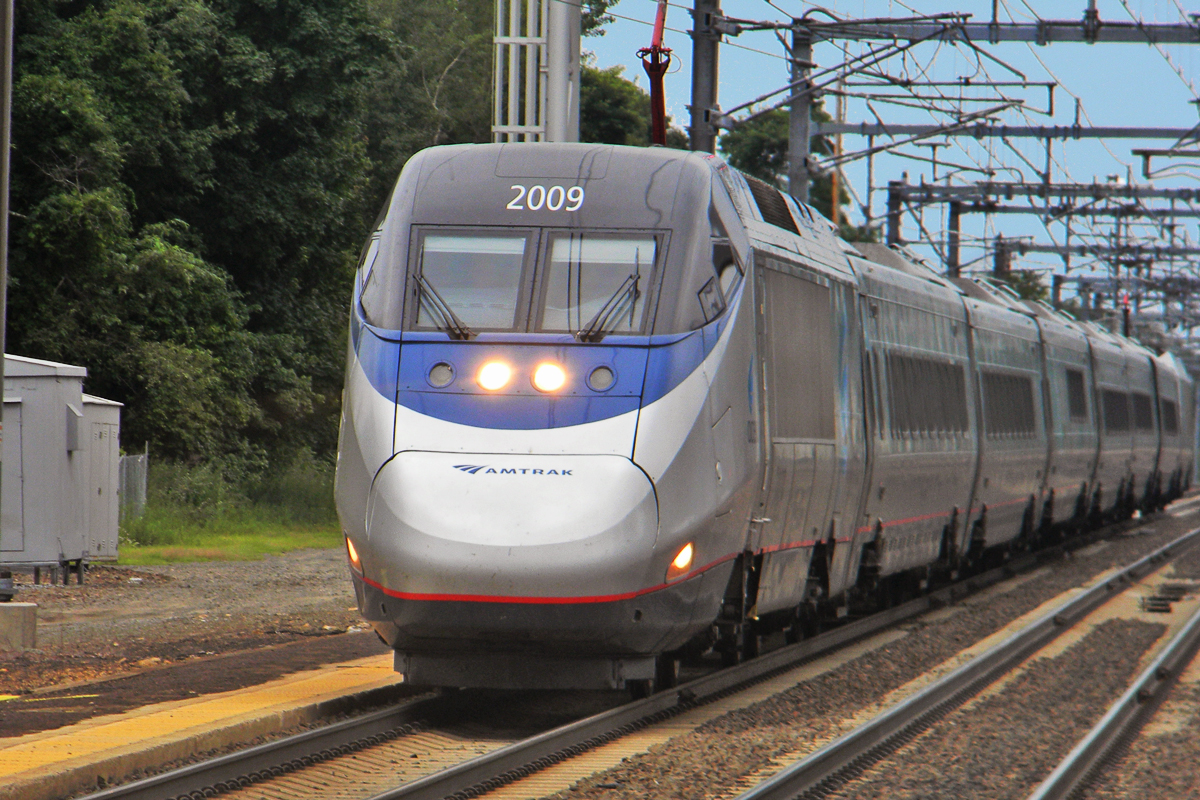For over 20 years, Amtrak Acela trainsets have hauled millions of people between the major American cities of the Northeast megalopolis, connecting vacationers, college students, and businesspeople alike with destinations including Washington, D.C., New York City, Philadelphia, and Boston.
However, the current trains, built from 1998 to 2001, are beginning to show their age. Their reliability is slowly decreasing, and numerous incidents involving mechanical failures on these trains have been documented by the media, ranging from simple power failures to a train separating into two cars during a trip around six years ago.
To ease these woes, Amtrak is testing the next generation of Acela trainsets, featuring expanded amenities and a higher top service speed of 160 miles per hour, as compared to 150 miles per hour for the original trains. The new trains also have a higher max design speed —186 miles per hour versus 165 miles per hour — but Amtrak does not have plans to run the new trains that fast.
However, the capabilities of the old and new trains will continue to be limited by the infrastructure supporting them both north and south of New York Penn Station.
According to Amtrak, the new trains will be phased in starting later this year, although this was originally planned for 2022. Trains aside, the original New York City to Washington, D.C. segment of the Northeast Corridor was constructed by the Pennsylvania Railroad more than 130 years ago and faces several challenges. There are many places where passenger trains compete with freight trains for use of the line, and its infrastructure is in poor condition.
Many of its tunnels and bridges are outdated and severely deteriorated, including the North River Tunnels that carry trains under the Hudson River and the Palisades to and from New York Penn Station. Another piece of infrastructure that causes headaches for commuters and crews alike is the notorious Portal Bridge over the Hackensack River — it is synonymous with long delays and waiting trains every time it must be opened for marine traffic, since it does not always close reliably. The Gateway Project, a plan to update the Northeast Corridor line from Newark to New York City, aims to address these shortcomings, but the envisioned upgrades won’t be fully completed until well beyond 2030.
The New York City to Boston segment has newer infrastructure, but the route has more curves than the section south of New York City; even though the Boston route contains one of two sections of the route where the speed limit is 150 miles per hour, trains don’t always have a chance to reach their maximum speed. Various upgrades are necessary to increase the average speed along the entire line, but these are not likely to happen soon.
Overall, while Amtrak’s attempts to improve service for Northeast Corridor frequenters, and by extension the NJ Transit customers who use the same rails, are underway, these will not be majorly beneficial without improvements to surrounding infrastructure.



























